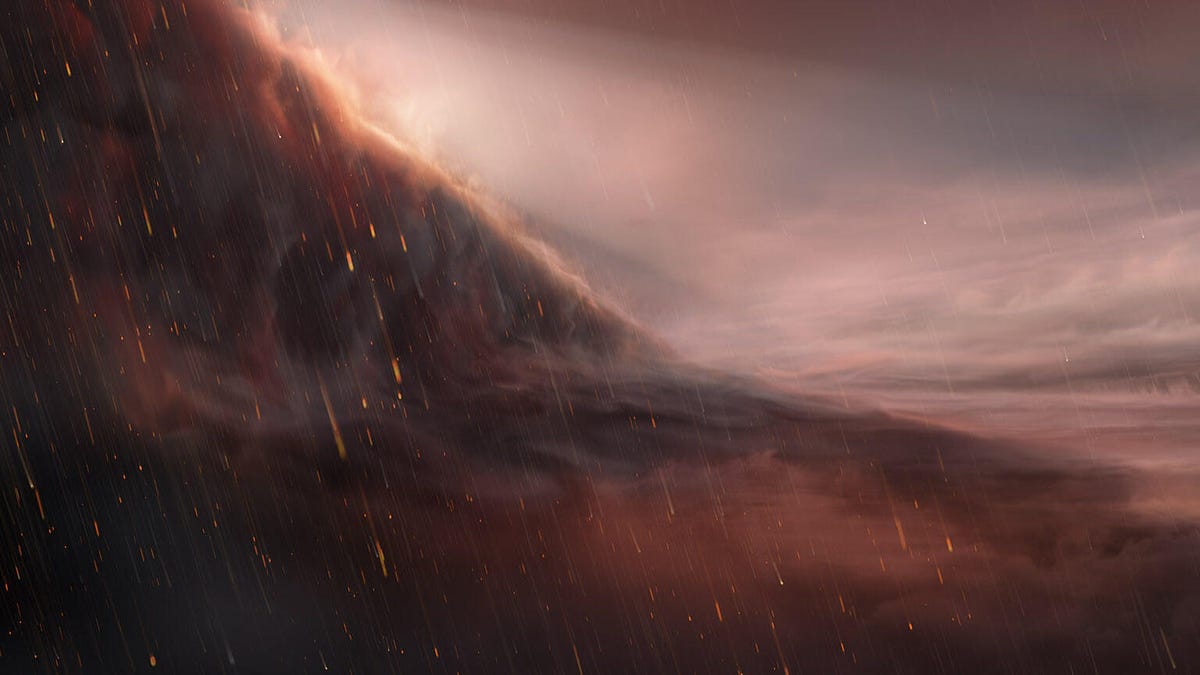Astronomers discovered a giant planet where it rains iron
*Extremely metal guitar riff plays*

Iron rain or, as we are calling it at CNET, i-Rain.
Prince had purple rain. Roy Batty had tears in rain. Saturn's moon Titan has methane rain. But none of those phenomena are as extremely metal as WASP-76b, an ultra-hot planet approximately 640 light-years from Earth. When day turns to night on the distant planet, something weird happens.
It rains iron.
The findings, published in the journal Nature on Wednesday, come via a 60-day observation of WASP-76b by the European Southern Observatory's Very Large Telescope in Chile. Astronomers used data collected by the Echelle Spectrograph for Rocky Exoplanets and Stable Spectroscopic Observations (Espresso), a new instrument on the Very Large Telescope, to study the absorption of light emitted from the ultra-hot planet and discovered the extremely metal iron rain phenomena.
WASP-76b is tidally-locked, only ever showing one side to its parent star, WASP-76, much the same way the moon only ever shows on face to the Earth. Essentially, the side that faces the star is battered by radiation, sending temperatures skyrocketing above 3800 degrees Fahrenheit (or around 2100 degrees Celsius) and vaporising metals like iron. The planet's ferocious winds carry that to the night side, where temperatures are a positively chilling 2700 degrees Fahrenheit (note: this is still very hot).
The team used Espresso to detect iron where day turns to night -- a line called the 'terminator' -- however in reverse, where the terminator turns from night to day, they couldn't detect the same signal. When the vaporized iron gets to the night side it condenses and rains down on WASP-76b in what can only be described as, "The Perfect Stage Show For An Iron Maiden Concert."
"One could say that this planet gets rainy in the evening, except it rains iron," said David Ehrenreich, an astronomer at the University of Geneva, Switzerland and first author on the paper, in a press release.
It was the first observations for Espresso, an instrument designed to detect exoplanets that look like Earth around stars that resemble our sun. Researchers soon realized Espresso could do much more -- and combined with the powerful telescope could help study exoplanet atmospheres.
The wild finding helps astronomers learn more about the extreme climates of distant planets and how they might impact processes across the cosmos. It also makes me think about how different that scene in The Notebook would be if it was filmed on WASP-76b.
Correction, 5:30 p.m. PT: An earlier version of this article said WASP-76b was 390 light-year away. WASP-76b is much further away! It's actually 640 light-years from Earth.

